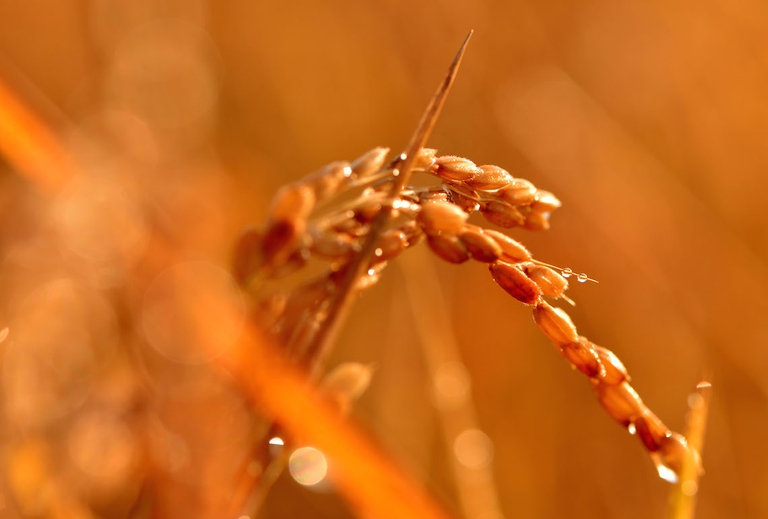
Factory farming conditions and antibiotic-resistant pathogens emerging as a result of them pose an existential threat to humans in the form of zoonotic diseases. Why it’s time to produce and consume food more thoughtfully.
Discussions about GMOs, carcinogenic pesticides and food allergies are making Americans take a step back, looking back to a time when nature ruled. The US, where wheat is the principal food grain, is seeing a resurgence of ancient varieties such as Turkey Hard Red Winter Wheat, which came to the country in the 19th century,
Discussions about GMOs, carcinogenic pesticides and food allergies are making Americans take a step back, looking back to a time when nature ruled. The US, where wheat is the principal food grain, is seeing a resurgence of ancient varieties such as Turkey Hard Red Winter Wheat, which came to the country in the 19th century, and the older Kamut, spelt, emmer and the most ancient of them all, einkorn.
Whilst genetically modified wheat isn’t grown commercially, the crop has gone through intensive hybridization over time, a process driven by profits rather than health benefits in recent times. Modern wheat has a high gluten content and is often grown industrially as a monoculture, an outdated and unsustainable system.
Ever more mid and small scale farmers are experimenting with ancient grains as demand for them is growing steadily, according to the Smithsonian Magazine. This is good news for the environment, consumers and farmers given that these grains are mostly grown according to sustainable and organic practices that follow crop rotations and take good care of the soil. The result is a much higher level of nutrients and vitamins, on top of superior flavour.
Of additional interest is the fact that some people who are intolerant or even allergic to gluten can consume ancient wheat varieties without suffering any of the symptoms associated with modern wheat. Since these grains were either never hybridized, such as einkorn, or if they were it was according to age-old techniques, they contain less gluten and gliadin, a class of protein present in wheat that often causes inflammation.
There are many uses for these precious kernels. The sky is the limit, and recipes abound online. Most notable is sourdough bread made with freshly milled whole grain flour. Besides being delicious, it can help those sensitive to gluten: sourdough, or wild yeast, breaks down the protein rendering it more digestible and reducing its inflammatory quality. The fermentation also eliminates phytic acid, an antinutrient naturally present in most grains, legumes, nuts and seeds that inhibits nutrient absorption. Sprouting grains is another technique that increases the nutrient content and makes grains easier to digest.
Siamo anche su WhatsApp. Segui il canale ufficiale LifeGate per restare aggiornata, aggiornato sulle ultime notizie e sulle nostre attività.
![]()
Quest'opera è distribuita con Licenza Creative Commons Attribuzione - Non commerciale - Non opere derivate 4.0 Internazionale.
Factory farming conditions and antibiotic-resistant pathogens emerging as a result of them pose an existential threat to humans in the form of zoonotic diseases. Why it’s time to produce and consume food more thoughtfully.
The world of cinema recognises the link between food choices and the climate crisis by offering vegan menus for awards season events, including at the most important of them all: the Oscars.
Let’s look at the reasons behind the growth of veganism in India, as a small yet vocal section of the population turns towards this diet and lifestyle in the largest milk producing country in the world.
by Jeffrey Y. Campbell, Manager of the Forest and Farm Facility at FAO In the Ecuadorian Amazon, Kichwa farmers grow dozens of products on tiny parcels of land. Their lands hum with biodiversity, yielding nutritious foods that have sustained families for generations. Wandering among fruit and nut trees and crops, these indigenous agroforesters fill their baskets
Mint has many health benefits, but in food it’s often accompanied by artificial green colourings. Instead, Galatea has created a green mint ice cream in a completely natural way.
We’re talking about Galatea, a company that produces semi-finished products for artisanal ice creams using high quality ingredients, natural colouring, excluding thickeners and hydrogenated fats, respecting the environment and supporting the less fortunate.
The mad rush to fake food, like fake meat made with genetically-modified soy, ignores the importance of the diversity of our foods and culinary cultures. It’s a recipe to accelerate the destruction of the Planet and our health.
Like with all foods, the quality of an ice cream can be discerned by reading its label. An expert explains how to do this, and tells us how their company steers clear of chemicals, using only natural ingredients to produce an excellent and “free” ice cream.
Quality ingredients, no artificial colouring and hydrogenated fats. These are the main features of a great ice cream. But what makes an ice cream parlour “good”, i.e. sustainable?








